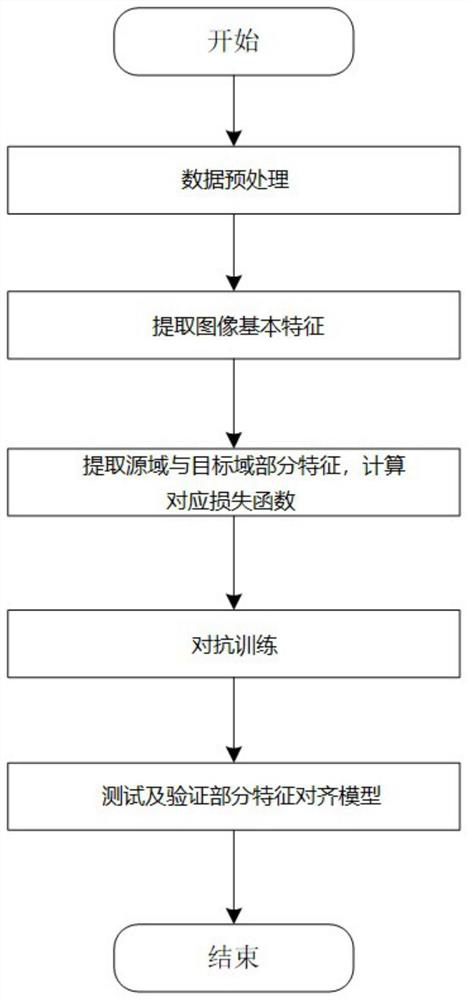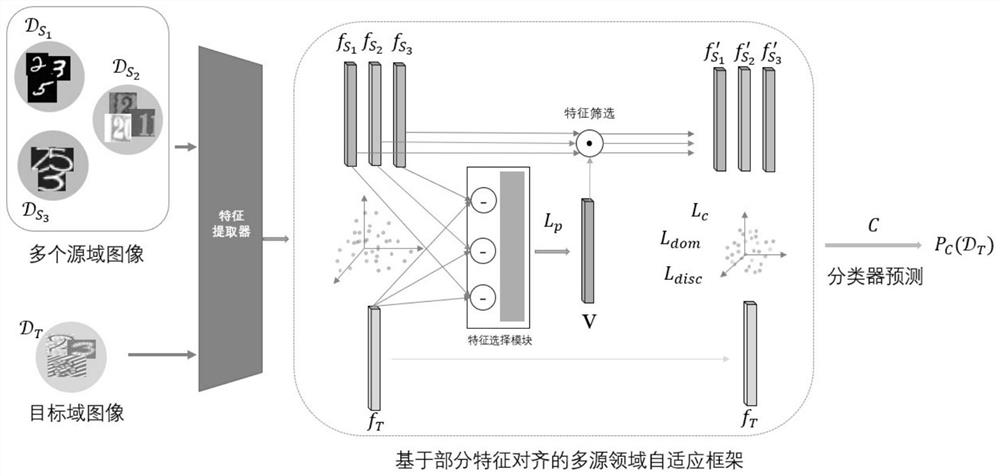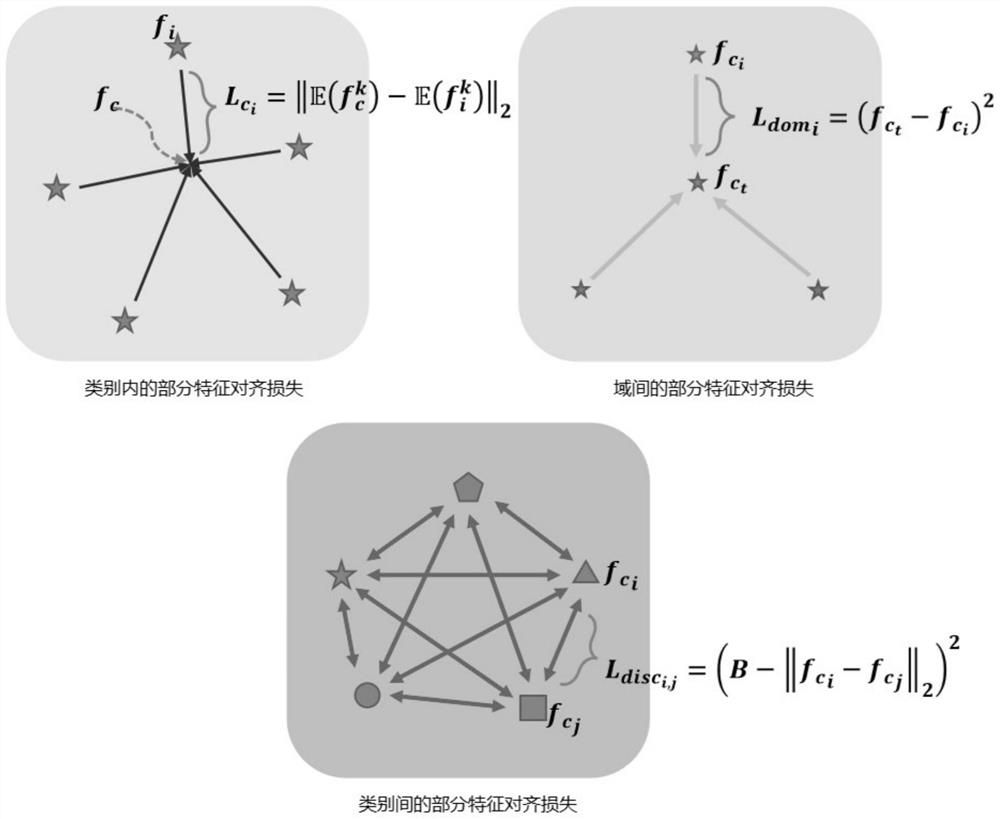Multi-source domain adaptive model and method based on partial feature alignment
An adaptive model, multi-source domain technology, applied in the multi-source domain adaptive model structure domain, can solve problems such as the decline of alignment effect, and achieve the effect of reducing distribution differences, realizing domain adaptation, and avoiding negative effects
- Summary
- Abstract
- Description
- Claims
- Application Information
AI Technical Summary
Problems solved by technology
Method used
Image
Examples
Embodiment Construction
[0049] In order to make the purpose, technical solution and advantages of the present invention clearer, the present invention will be further described in detail below in conjunction with the implementation and accompanying drawings, so that those skilled in the relevant art can better understand the present invention. It should be noted that the described embodiments are some, not all, embodiments of the present invention, and are not intended to limit the scope of the claimed invention. All other embodiments obtained by persons of ordinary skill in the art without creative efforts fall within the protection scope of the present invention.
[0050] Considering that the existing multi-source domain domain adaptive model often aligns all the features together when performing feature extraction and alignment, it ignores the fact that some features are unique to the source domain and do not appear in the target domain. , the present invention proposes a multi-source domain adapt...
PUM
 Login to View More
Login to View More Abstract
Description
Claims
Application Information
 Login to View More
Login to View More - R&D
- Intellectual Property
- Life Sciences
- Materials
- Tech Scout
- Unparalleled Data Quality
- Higher Quality Content
- 60% Fewer Hallucinations
Browse by: Latest US Patents, China's latest patents, Technical Efficacy Thesaurus, Application Domain, Technology Topic, Popular Technical Reports.
© 2025 PatSnap. All rights reserved.Legal|Privacy policy|Modern Slavery Act Transparency Statement|Sitemap|About US| Contact US: help@patsnap.com



